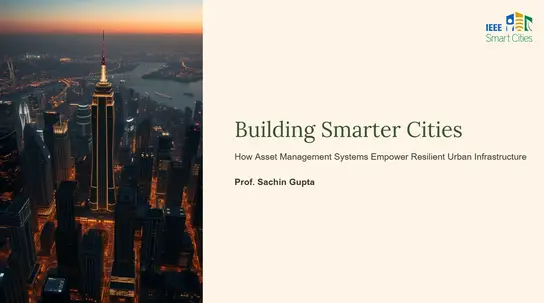Tutorial 1: 5G enabled CAVs for Smart and Sustainable Mobility in Smart Cities
Soufiene Djahel, Yassine Hadjadj-Aoul
-
Members: $15.00Sponsoring Society
IEEE Members: $20.00
Non-members: $30.00Length: 02:32:58
Tutorial
28 Sep 2020
Connected and Autonomous Vehicles (CAVs) will be one of the main building blocks of Smart Cities as their role will not be only restricted to transporting people and goods but also to enabling novel applications by sharing their own resources and/or connecting service providers and users in a more efficient and cost-effective way. The World Economic Forum anticipates that CAVs will generate significant economic benefits to consumers and society over the next 10 years, and autonomous driving features will help prevent 9% of accidents by 2025 with the potential to save 900,000 lives in the next 10 years. CAVs will be established by enabling wireless communication between vehicles and to the infrastructure. Using cooperative traffic applications, CAVs promise solutions to many of today’s road traffic problems, such as improving the safety of road users, shortening their trip times, reducing emissions, and enhancing the driving experience.This tutorial will focus on the main communication and networking related challenges, such as the bandwidth scarcity of the DSRC spectrum and the efficient caching in 5G and Beyond 5G (B5G), which need to be overcome to ensure successful implementation of different CAVs applications. We will also shed light on future directions in CAVs and the potential of sharing its unused resources to offload 5G/B5G networks.
Primary Committee:
IEEE Smart Cities Conferences



